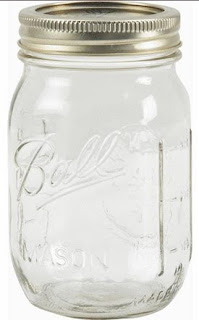
Spring has come, and with it promises of birth, re-birth and growth. Whether you call it Easter, Passover, or Ostara’s month, this is a time that people have celebrated since long before recorded history. In 4 days time, April 8, many Buddhists celebrate the Buddha’s Birthday, and if you go to any of the major botanical gardens here you will see monks coming to appreciate the beauty of springtime flowers and greenery.
The Earth has celebrated Spring long before there were people. This has always been a time of renewal and rebirth. Animals and plants, dormant in winter, now spring forth to grow and mate; this is lambing and calving season. Seeds scattered in fall and winter now sprout and grow.
To me, sprouts symbolize the promise of rebirth that is Spring. Seeds are amazing things. There have been wheat seeds found in Egyptian tombs, 2,000 years old, that have successfully sprouted. The resulting wheat is now being grown in fields throughout the Middle East today.
The nutrients in seeds are relatively difficult to digest, and this is intentional. Sugars and other nutrients are converted to starches and proteins that are harder for insects and bacteria to eat. When the germ is exposed to the right conditions it produces enzymes to unlock the food stored in the seed, converting it back into sugars and nutrients to help the seed start its new life.
So in my head, seeds are like a fairy tale. The little germ is a slumbering princess, and the seed is a magic box which only the princess can open. The princess awakens to loving warmth, opens the box, uses the magic in that box to grow and prosper.
Sprouts, due to this magical alchemy of enzymes, have many nutrients and amino acids in a form that is easier for us to digest and may not be present in the mature plant, or if present are indigestible to us. For instance, I’m making bean sprouts this week. The sprouting process makes the beans easier to digest and the sprout part is tasty and filled with good nutrition. If I let the sprout mature I doubt that it will be tasty or nutritious. I simply don’t have the intestinal fortitude to eat a mature bean plant. This makes the sprout the best of both worlds.

Almost any kind of seeds can be used. This time I’ve used mung beans, but lentils, soybeans, or any other bean can be used. Alternatively you can sprout alfalfa, radish, cabbage…virtually anything. Each has its own flavor and texture: Bean sprouts tend to be fat and juicy, alfalfa light and nutty, radishes and onions are a little spicy, etc. You can sprout different kinds of seeds together to make a sprout salad.
Of course we can grow sprouts all year round. They are simple to do, just a few seeds, a little warmth and a little water is all it takes.
Sprouts need air, so I needed to make a little modification. I went to a hardware store and bought a couple feet of screen mesh, the kind you see for windows or screen doors. 2 feet of screen mesh cost me .99 per foot, and I got 2 feet of it in case I messed up. I cut a strip out of this mesh with kitchen shears and cut the strip into squares about the size of my jar lid. Then I simply used the sealer part of the lid as a template, holding it firmly against the screen and cutting around the lid until I had a more or less uniform circle that would fit nicely inside the lid. I made 8 of these mesh screens, and have enough material left over to make 40-50 more.
Alternatively, you can buy ready-made plastic or metal screen lids. I found them online for about a buck apiece, which is not a budget breaker, but making them myself was so easy and inexpensive; if I’d ordered them online I’d have to wait for them to arrive. You could also use cheesecloth, but I wanted something that I could reuse over and over again.
The next step is soaking the seeds. Most seeds need to be soaked for half a day to a day. I put the mung beans into the jar, put the mesh in place, and filled the jar with water. Then about 12 hours later I drained the water. At this point it is a good idea to put them in a strainer and select out any “bad” seeds—broken seeds, shriveled ones, etc.
Remember that sprouts are like popcorn. Once they start sprouting they will grow, so until you have done a few batches, use less than you think you need. I recommend about 1-2 tbsp of seeds, depending on type and size of jar. With mung beans, 2 tablespoons will sprout to fill a quart jar.
Put the seeds back into the jar. Once or twice a day, rinse the beans by pouring water in, let sit for a couple minutes, and pour the water back out. Do not shake the beans, as that can damage fragile sprouting roots and stalks, but gently roll the jar to move the beans around for maximum exposure to both water and air.
In a day or two you should see sprouts. First come the little root, then the stalk and leaves. Once they are ready you can refrigerate them to slow their growth. Sprouts are best eaten fresh.
Okay, so now you have a jar of sprouts…what do you do with them? You can eat them plain, put them into salads, scramble with eggs, stir fry them, add to sandwiches, put them into soup, pickle them, use them as a garnish…the list is nearly endless. I do not recommend them on ice cream, but other than that their uses are limited only by your imagination.
Where I live, sprouts are cheap and plentiful. I can walk into any supermarket and by a package of sprouts for next to nothing. In the Asian markets they sell huge bags of soybean sprouts for a few dollars. It’s almost as cheap to buy them as to grow them myself. So, given how cheap and common they are, why would I bother to grow them? I have two reasons:
First, like any home grown produce, it’s tastier. I think my homegrown sprouts have more flavor, and are therefore more nutritious. I believe it’s because I take more individual care with a smaller batch, and the sprouts respond to my much more individualized care and attention (and affection.) There is much less chance of contamination with home grown bean sprouts (recently some bean sprouts were pulled from shelves due to salmonella.) Also, I can buy a greater diversity of seeds for sprouting than are often available in the local store.
Second, it’s fun! I am a 44 year old man, but when I see the first little sproutlings, I am a kid again, marveling at the miracle of life. It is a beautiful thing to watch the tiny plants sprout and grow. It makes me happy to watch and contemplate the marvelous thing that is life, birth, and rebirth. I know a lot of the science behind what is happening, and to me that simply makes it more amazing, more miraculous, not less.
It’s a real life fairytale that has been enacted and reenacted countless trillions of times for billions of years. It’s happening right now, all around us …And we are a part of that tale.
Whatever you call this season, however you celebrate it, be sure to stop and look at the tiny miracles happening all around you…and share with your loved ones.
















